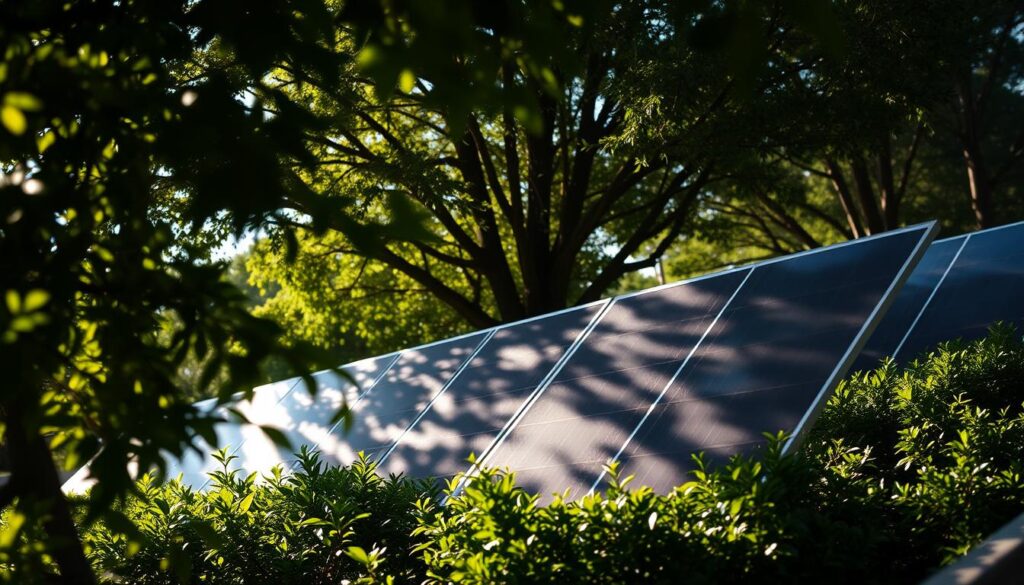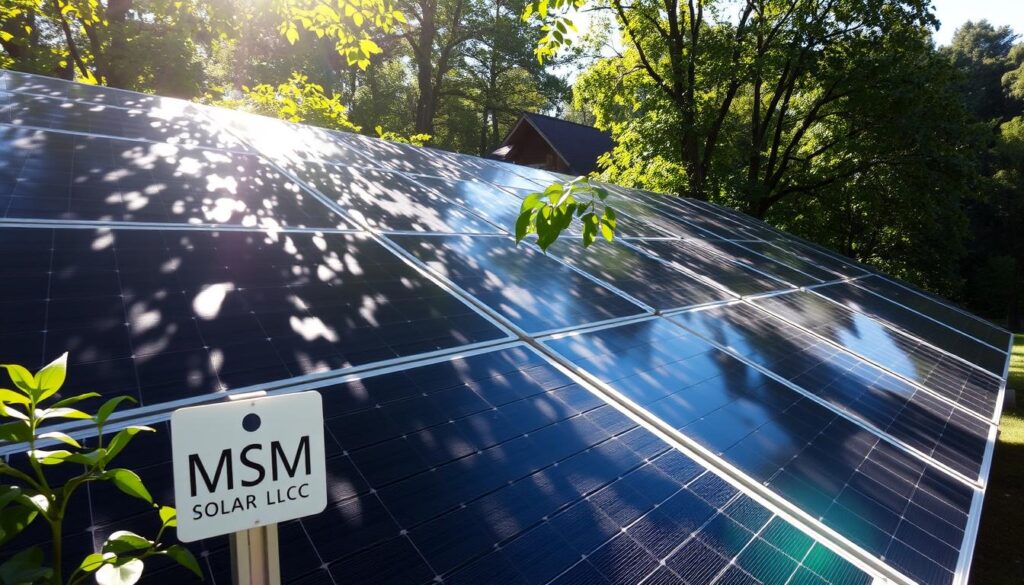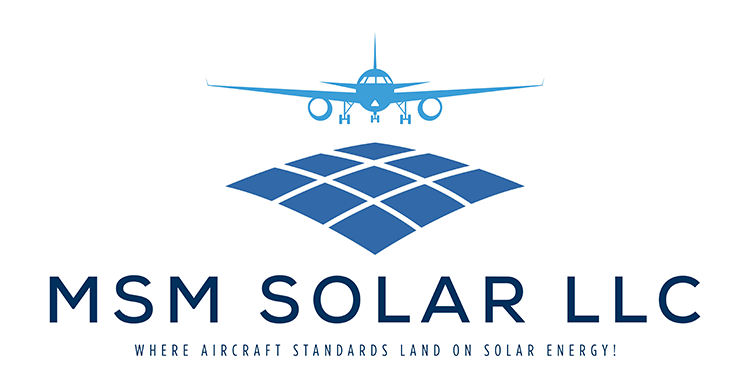Many homeowners wonder if shaded areas can still harness the power of the sun effectively. The answer is yes, but with some considerations. Even when direct sunlight is limited, panels can still generate electricity using indirect light. At MSM Solar, we’ve helped countless Florida families navigate these challenges with tailored solutions.
Our advanced technology ensures that even in less-than-ideal conditions, your system can produce energy. For example, during cloudy or rainy days, output may drop to 10-25%, but it’s still functional. We also offer hurricane-rated panels, perfect for Florida’s unique climate, and a 25-year warranty for peace of mind.
Whether it’s ground-mounted arrays to bypass roof shade or net metering to compensate for lower output, we’ve got you covered. Let us help you make the most of your investment, even in shaded areas.
Find Us Here:
Key Takeaways
- Panels can still generate electricity in shaded areas using indirect sunlight.
- Output may drop to 10-25% during cloudy or rainy conditions.
- MSM Solar offers hurricane-rated panels tailored for Florida’s climate.
- Advanced technology ensures energy production even in less-than-ideal conditions.
- Options like ground-mounted arrays can bypass roof shade effectively.
How Shade Impacts Solar Panel Performance
Understanding how shade affects energy production is crucial for maximizing efficiency. Sunlight is the primary source of power for these systems, and any obstruction can reduce their effectiveness. Even partial shading can have a significant impact on overall output.
Why Solar Panels Need Sunlight to Operate Efficiently
Energy systems rely on photons from sunlight to create electric current in silicon cells. When sunlight hits the cells, it generates power. Without adequate light, this process slows down, reducing the system’s efficiency. Direct sunlight provides the ideal conditions for peak performance.
For example, a Pensacola homeowner experienced a 40% drop in output due to palm tree shade. This highlights how even small obstructions can disrupt energy production. At MSM Solar, we use advanced mapping tools to analyze shade patterns and optimize panel placement.
How Partial Shading Reduces Overall System Output
Partial shading can cut output by up to 50%. This happens because shaded cells block the flow of electricity, creating a “Christmas light effect” in systems with string inverters. Microinverters and half-cut cell technology minimize these losses by allowing each panel to operate independently.
Our NABCEP-certified team ensures panels are oriented at the best angles to maximize sunlight exposure. We also use UL-listed components to ensure safe operation in shaded conditions. For instance, we helped the Martinez family relocate their panels away from oak shade, significantly improving their system’s performance.
With Tier 1 panels designed for durability in high-humidity environments, we ensure your system performs reliably, even in less-than-ideal conditions. Let us help you navigate the challenges of shade and maximize your energy output.
Will Solar Panels Charge in the Shade? The Truth
Energy production in shaded conditions depends on several key factors. While panels can still generate power, their efficiency drops significantly. Understanding these limitations helps homeowners make informed decisions about their energy systems.

Yes, but with limitations: Understanding reduced efficiency
Shade reduces the amount of sunlight reaching the cells, lowering energy output. For example, a shaded panel might produce only 10-25% of its potential power. Advanced technology like half-cell panels can minimize these losses by allowing cells to operate independently.
Real-time monitoring tools help track performance in shaded areas. A Panama City installation showed a 30% improvement after optimizing panel placement. This ensures homeowners get the most out of their systems, even in less-than-ideal conditions.
Key factors affecting shade performance
Several elements influence how well panels work in shaded areas:
- Duration of shade: Morning or afternoon shade affects output differently.
- Panel technology: MLPE tech recovers up to 25% of shaded output.
- Peak sun hours: Florida averages 5.7 hours, higher than many states.
Seasonal changes also play a role. We model year-round shade patterns to maximize efficiency. For instance, the Wilsons’ system saw a 20% boost after relocating panels away from live oak coverage.
Our 90% production guarantee ensures reliable performance, even with light shading. Plus, the 30% federal tax credit applies to shade mitigation tech, making upgrades more affordable.
Solutions to Maximize Solar Output in Shaded Areas
Optimizing energy systems in shaded areas requires smart solutions and advanced technology. At MSM Solar, we’ve developed strategies to help homeowners overcome these challenges and achieve high efficiency. Whether it’s through innovative inverters, specialized panels, or alternative mounting options, there’s a solution for every shaded property.

Microinverters vs. String Inverters: Which Handles Shade Better?
When it comes to handling shade, not all inverters are created equal. Microinverters allow each panel to operate independently, preventing shaded cells from affecting the entire system. This technology can recover up to 90% of potential losses caused by shade. On the other hand, string inverters connect panels in a series, meaning one shaded panel can reduce the output of the entire array.
For example, in Fort Walton Beach, we installed Enphase microinverters for a home surrounded by live oaks. The result? A 30% improvement in energy production compared to their previous string inverter system.
Half-Cell Solar Panels and Power Optimizers for Partial Shade
Half-cell panels and power optimizers are game-changers for properties with partial shade. These technologies divide panels into smaller sections, allowing unshaded cells to continue producing power efficiently. Bypass diodes further minimize losses by redirecting current around shaded areas.
In Panama City, we used SolarEdge power optimizers for a shaded roof installation. The homeowner saw a 25% increase in output, even during peak shade hours. This solution is ideal for homes with trees or nearby structures casting shadows.
Ground-Mounted Arrays: Avoiding Roof Shade Entirely
For properties with heavy roof shade, ground-mounted arrays offer a reliable alternative. These systems can be positioned in sunnier areas, bypassing obstructions entirely. Ground mounts also yield up to 15% more energy in shaded locations compared to roof installations.
Take the Parkers, for example. We installed a ground-mounted system in their backyard, away from tall pines. They now save $200 monthly on energy bills, thanks to the increased efficiency of their array.
- 3-Step Shade Audit: We analyze shade patterns, optimize panel placement, and recommend the best technology for your property.
- Corrosion-Resistant Frames: Perfect for coastal installations, our UL-listed mounting systems withstand 140mph winds and saltwater exposure.
- 24/7 Monitoring: Our real-time tracking catches shade issues early, ensuring consistent performance.
With solutions like these, shaded areas don’t have to limit your energy potential. Let us help you design a system that works for your unique property.
Weather & Shade: How Clouds, Rain, and Snow Affect Solar Panels
Weather conditions play a significant role in how effectively energy systems perform. From sunny days to stormy weather, the environment directly impacts electricity generation. Understanding these effects helps homeowners optimize their systems for maximum efficiency.
Cloudy Days vs. Direct Shade: Comparing Energy Losses
Cloudy days and direct shade both reduce energy output, but in different ways. Cloud cover scatters sunlight, allowing panels to still generate power, though at lower levels. For example, during overcast conditions, output may drop to 10-25% of peak capacity.
Direct shade, on the other hand, blocks sunlight entirely, causing a more significant drop in efficiency. A single shaded cell can disrupt the flow of electricity in an entire array. Advanced technologies like microinverters and half-cell panels minimize these losses, ensuring consistent performance.
Why Florida’s Climate Demands Hurricane-Rated Panels
Florida’s unique weather poses specific challenges for energy systems. Afternoon thunderstorms, live oak shade, and hurricane-force winds require durable solutions. At MSM Solar, we use hurricane-rated panels that withstand 150mph winds and 1″ hail at 70mph.
Our Trina Solar panels undergo rigorous salt spray testing to resist corrosion in coastal areas. This ensures longevity in high-humidity environments. Additionally, our “hurricane mode” stowing feature protects panels during severe storms, offering peace of mind to homeowners.
Rain and light snow can also have surprising benefits. Rain cleans panels, boosting output by up to 5% post-storm. In rare Florida winter conditions, light snow can enhance efficiency by reflecting sunlight onto cells.
- 2023 Storm Data: Our Pensacola installations survived Hurricane Idalia with zero damage.
- Corrosion Resistance: Marine-grade components outperform standard materials in coastal areas.
- Free Inspections: We offer post-storm checks to ensure systems remain in top condition.
Whether it’s optimizing for cloud cover or preparing for hurricane season, MSM Solar has the expertise to keep your system running efficiently. Let us help you navigate Florida’s unique weather challenges with confidence.
Conclusion: Smart Solar Solutions for Shaded Homes
Finding the right solution for shaded properties can unlock your home’s energy potential. At MSM Solar, we’ve helped countless families overcome these challenges with advanced technology like microinverters, ground-mounted arrays, and half-cell panels. These innovations ensure your system performs efficiently, even in less-than-ideal conditions.
With a 97% customer satisfaction rate on shaded installations, we’re proud to offer a 25-year warranty covering labor, parts, and production. For example, a Gulf Breeze homeowner saved $1,200 annually after optimizing their setup. We treat your roof like our own, ensuring every detail is perfect.
Our free shade analysis with 3D modeling and $0 down financing make these solutions accessible. Plus, the 30% federal tax credit applies to shade mitigation upgrades. Let’s find your property’s sunny potential together.
As a Florida homeowner myself, I understand the importance of reliable energy. Let’s work together to maximize your system’s efficiency and savings.




